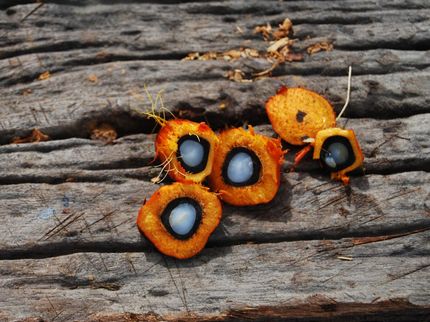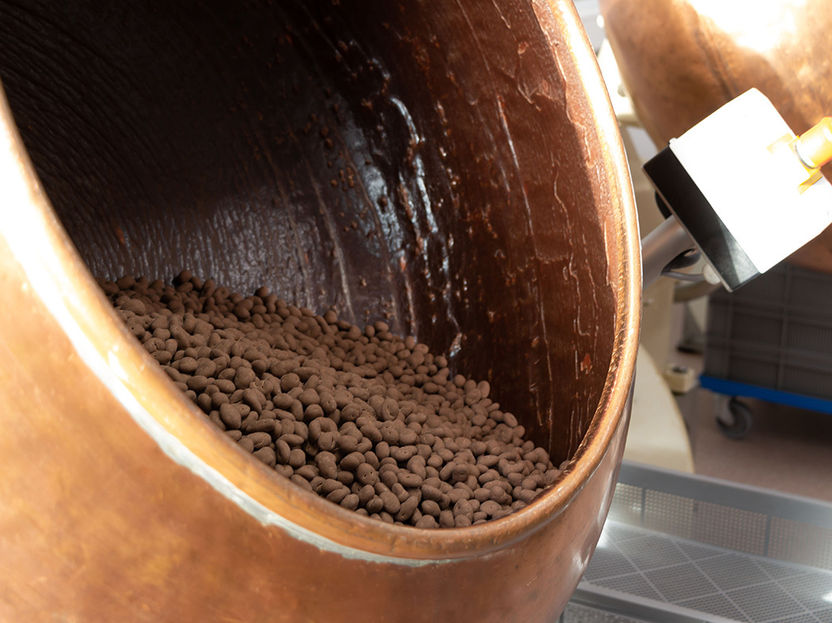Serious Competition for Unhealthy Fats
Oleogels produced from regional vegetable oils could improve the nutritional value of sweet and baked goods, thus making them healthier
They are responsible for the tender melting of chocolate spreads, the fluffiness of muffins and they help make cookies nice and crumbly. They also play a role in making sweets irresistible. We are talking about solid fats such as baking margarine, palm fat or hardened coconut oil. Unfortunately, excessive consumption of these ingredients is discouraged. For health reasons, such solid fats, more precisely the intake of saturated fatty acids, which are intrinsically linked to solid fats, should according to WHO recommendations be limited to 10% of the energy intake.
Solid fats are omnipresent in our foodstuffs and indulgence foods: all dairy products and meat, baked goods, spreads, marinades, sauces, ice cream, confectionary and a whole range of ready-made meals contain them. Except for dairy products and meat, the high levels of saturated fats are dictated by desired product properties and processing conditions. Due to the elimination of partially hydrogenation fats (trans fatty acids) since the late 90ies the levels of saturated fat in food products has been increasing. The next challenge, researchers like Dr. Eckhard Flöter, professor of food process engineering, and his colleague Till Wettlaufer are addressing, is to replace solid fats, high in saturated fatty acids, in food products. Their work currently focuses on finding alternatives to produce functional semi-solid fat/oil phases. The “Oleoboost” research project focuses on enabling improved fatty acid profiles, more unsaturated, by applying non-triglyceride-based structuring of rapeseed oil. It is funded by the Federal Ministry for Economic Affairs and Energy.
You can’t make dough using liquid oil

Photo by Sheelah Brennan on Unsplash
Alternatives are provided by oleogels using regional seed oils such as rapeseed, sunflower or linseed oil. As their name suggests, oleogels are gelled oils. “The semi-solid state is typical for fats and often technically required. For example, making a dough from just liquid rapeseed oil and flour is just not working,” explains Flöter. “What we are hence looking for are substances to solidify oils.” Numerous of these structuring agents are already identified. Currently Flöter and Wettlaufer use the following: Ethyl cellulose, monoglycerides, sunflower wax or the combination of oryzanol and betasitosterol found in rice bran and soybean oil, respectively. Chemically the later resembles cholesterol, which also works but most likely would not find the consumer’s blessing.
“Like biting on lip balm”
Replacing solid fats, however, is a multidimensional problem. For one thing, solid fats have a set of characteristics that make products desirable for the consumer and easy to use for the manufacturer. These include the pleasant sensation a product generates in the mouth, its creamy or crumbly consistency, its taste release, spreadability and keepability as well as the workability of the dough or ice cream. “In recent years several structuring agents have been identified. But applying a gel in, for example, a croissant remains a real challenge. Technically, during the lamination process, when the dough is rolled out in layers, the fat must keep the layers of dough separate from one another. Organoleptically, the croissant has to meet consumer expectations when eaten. Up to now, gels have not been able to laminate, some fall apart on kneaded, might stick to the palate of the mouth with a waxy sensation, rather like biting on lip balm,” says Flöter.
Tried and tested on muffins
Researchers at the Max Rübner Institute that co-operate in the “Oleoboost” project have shown that oleogels represent a serious alternative to solid fats in baking applications. An oleogel based on rapeseed oil and a combination of ethyl cellulose and monoglycerides has proven effective in producing shortcrust pastries and muffins. “These results are very promising. But a successful structuring system must be versatile. For this one we already know that is does not work in whipped creams, which is another difficult application. Here, like in ice cream, fat droplets form aggregates that stabilize the bubble surface to generate the desired product structure. The ability of a structuring agent to achieve the desired product qualities – creamy, fluffy, crunchy, crumbly – depends also on how a product is created, whether it is kneaded, whipped or stirred, in other words the production processes applied, and the ability of the gel to withstand these treatments” explains Wettlaufer. “Having a working solution, highly saturated fats, does not mean that the way it works is understood in detail. This makes it particularly difficult to find structuring agents that work in a wide range of products. This is, however, necessary because it is not feasible to implement a specific solution for each product.”
Increasing skepticism regarding palm oil
The “Oleoboost” project aims at replacing highly saturated structuring fats which are often based on palm oil and coconut oil with healthier oleogels, high in unsaturated fatty acids. The initial product focus is on baked goods and confectionary. Rapeseed oil is particularly interesting. It is rich in healthy unsaturated fatty acids with a good balance of omega-6 to omega-3 fatty acids. This also has a downside, the healthier oils a more prone to oxidation than currently used fat compositions. Secondly, the public image of palm oil is another motivation to move away from it. “It does not matter much, in how far the consumer’s perception that palm oil production is directly linked to the clearing of the rain forest is justified or needs a much more detailed assessment which I would advocate. Food producers listen to the consumer. This means that substitutes for solid fats need to be found,” says Flöter.
From lab to factory
Different to other projects on oleogels, the "Oleoboost" project has the ambition to enable a successful transfer from the lab towards commercial application. The project team does not wish to restrict its activities to gelling oils in test tubes; the aim is to develop solutions that work in the product context. This means to manufacture oleogel-based products - yogurts, ice creams, confectionary and spreads - in cooperation with industrial project partners. These products should not feel just as enticing to the tongue and taste just as good as those created using solid fats but also not yield increased consumer prices. “When I speak of applying our research, I mean scaling up to industrial levels and cost-effective production. This is certainly not easy to achieve,” says Flöter.
In short, the aim is to make food products and indulgence foods using oleogels that are healthy, tasty, regional, sustainable, producible at industrial scale and affordable. This may sound like the stuff of fairytales but it is in fact science - the science of food process engineering.





























































